ORDER UP
How quick service restaurants (QSR) can elevate their hygiene practices and customer experience through digital transformation.

ORDER UP
How quick service restaurants (QSR) can elevate their hygiene practices and customer experience through digital transformation.

From behind the grill to head office, McDonald’s Australia’s Integration Consultant & Digital Champion Daniel Antonjuk shares 13 years of business insights.
PRIMARY FOOD PACKAGING THE RISE OF NOLO HOW TO FIT PPE GECA LABELS EXPLAINED

In edition 2 of Flair 2023, we’re unearthing the secret behind the popularity of NOLO drinks (pg 21), and deep-diving into sustainable food practices in the catering industry (pg 12). We take a look at the efficiencies created by quality countertop equipment in commercial kitchens (pg 6), before discussing the significance of data-backed sustainability claims across all industries – and how to avoid greenwashing (pg 4).

We shine a light on sustainable primary food packaging for horticultural and agricultural businesses (pg 7) and then explore the functional role of packaging in communicating disposal and recycling options (pg 15).
Read about how the correct PPE fit in the workplace is vital for employee safety (pg 24), and discover exactly what the GECA ecolabel means when it comes to ethical and environmental production standards of personal care products (pg 28).
We also look into how quick service restaurants are innovating to keep up with customer demand (pg 8), and we cover the importance of effective cleaning to stop the spread of infections in large venues this winter (pg 18).
Finally, we chat to Michael Locke, National Business Development Manager at Bunzl Australia & New Zealand (pg 31), and sit down with our feature guest Daniel Antonjuk as he talks about what he’s learnt on his journey through the ranks of McDonald’s Australia (pg 30).
I hope you enjoy the read.
Lance Ward Managing Director, Bunzl Australia & New Zealand
@bunzlANZ @BunzlAustraliaandNewZealand
4 Spotlight: Sustainability

6 The Process: Space Savers
7 Check Out: Package Deal
8 The Service Factor
How quick service restaurants are elevating the customer experience, hygiene practices and more.
12 Conscious Catering Sustainable product solutions and practices for caterers.
15 Packaging Goals
How food packaging can help businesses meet their sustainability targets.
18 Clean Sweep
Ward off germs this winter with these best-practice cleaning tips.
21 Cheers to That
The low-down (and three tasty recipes) on the non-alcohol and low-alcohol movement.
24 Protective Measures
Knowing how to correctly fit Personal Protective Equipment is vital for a safe workplace.
27 Designed With Purpose
The ethically made Sustain coffee cups win an award.
28 Label With Care
Pay attention to GECA’s ecolabels to choose sustainable personal care products.
30 Superior Service
Cover Photography: Graham Werner
McDonald’s Daniel Antonjuk talks about his journey through the ranks of the global chain.
31 Expert Q&A
With Bunzl’s Michael Locke.
Cover Photography: Jonathan Cami
@BunzlANZHospitality
As businesses navigate the evolving legislation around sustainability claims, reviewing sustainability data can help establish a credible voice.
WITH THE RISE of sustainable business marketing, the Australian Competition and Consumer Commission (ACCC) and New Zealand Advertising Standards Authority (ASA) are cracking down on businesses that appear to be overstating sustainability claims for their goods and services.
In a recent investigation by the ACCC into the internet content of 247 businesses, 57% were found to have used “concerning claims” over their sustainability policies or products. These include indicating a product is recyclable despite there being no system in place for recycling, and using vague terms such as “green” or “kind to the planet” to describe a business, its products, or its services without supporting evidence.
Despite this increased scrutiny, Bunzl’s Head of Sustainability Felicity Kelly believes businesses should still be proud to highlight their sustainability efforts. “While some businesses might feel the need to publicly withhold or understate their sustainability marketing initiatives [a phenomenon known as green-hushing], as an industry we need to work together to find the right balance of comfort and credibility to effectively contribute to the global circular economy.”
So how can businesses achieve this? Based on the advice provided by the ACCC and ASA, being honest and transparent about supply-chain information is one of the first steps businesses can take. “Having reliable data in place to back sustainability claims is vital,” says Kelly. “This includes
checking that third-party credentials are accurate and securely recorded –requirements we have built into our processes at Bunzl.”
For smaller businesses who don’t have as many resources, the ACCC advises reaching out to organisations who can provide expert sustainability advice, as well as review environmental or sustainability claims and practices.
The takeaway from the ACCC and ASA report is that data certainty is key to navigating this complicated landscape and having a credible voice on sustainability, so we can all work towards a better future.
For more information on how Bunzl can assist its customers, contact our Sustainability team: sustainability@bunzl.com.au
Reaching sustainability targets is a team effort. Here’s how Bunzl is taking a collaborative approach.


DEVELOPING COMPANY-WIDE sustainable solutions and governance into the soul of a business is a journey best taken with the help of trusted advisors. For Bunzl, collaborating with customers to ensure sustainable alternatives across a range of industries is the way to do it. One such approach is their newly launched Sustainability Ambassador program that Bunzl employees can nominate to be part of.
Becoming an ambassador includes four onehour sessions of initial training run by one of Bunzl’s sustainability team, as well monthly meetings, a training component and timely sustainability updates into such topics as single-use plastic, waste management, responsible sourcing and climate change.

For NSW/ACT Account Manager Gareth Anderson, the way forward is through knowledge sharing. “I became a Sustainability Ambassador to get a better understanding of what sustainable products Bunzl is bringing to market so that I could pass on the knowledge to my customers. However, I quickly found there was far more to sustainability than just products,” he says. “Through the program, we’ve learnt what sustainability means across the whole of our business – from sustainable sourcing and supply-chain audits to ensuring safe work environments and developing tools to measure environmental impacts.”
The strive for smarter and more positive impactful initiatives can also become complicated with constant updates around environmental and consumer laws. For Jarrod O’Shannessy, National Corporate Account Manager – Healthcare, the Ambassador Program represents clarity around legislation. “Being a Sustainability Ambassador is an efficient avenue for me



With 50% of Australians more likely to buy a product containing a recycling label, there’s value in your business understanding the impact Australasian Recycling Labels have on the environment and consumer behaviour. Here’s a snapshot of why these labels are beneficial.
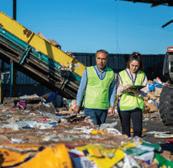
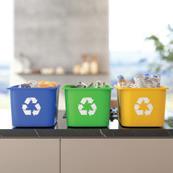

to keep up to date with all the current legislations and policies in regards to sustainability, while also allowing me to feed this information back to the Corporate Healthcare team and my customers,” he explains.




“I quickly found there was far more to sustainability than just products.”
– Gareth AndersonBunzl Sustainability Ambassadors from top left: Gareth Anderson; Allan Diniz; Rachel Fairweather; Jarrod O’Shannessy; Kaitlin Ristuccia; Melanie Harris; Grant Mullen
Free-standing kitchen equipment can actually offer more flexibility and productivity than you think.

WHY IS IT that no matter the shape and size of a commercial kitchen, or the scale of the operation, it still seems like space is always at a premium? It’s why every piece of kitchen equipment needs to fit perfectly in the floor space available and add its own value. But in this equation of what goes where, free-standing equipment can often get overlooked. In many cases, smaller appliances can offer as much value as larger ones while using a fraction of the space. Whether it’s a bain-marie, electric fryer or a hot plate, free-standing appliances are flexible, efficient and highly productive – and no three factors are more vital in a commercial kitchen.
For a start, you can choose countertop hardware that will fit into your existing set-up. No need to rearrange the kitchen or refurbish areas to accommodate, the equipment can be positioned wherever is most convenient for use and most suitable to conserve space. And because they enhance flexibility and speed in the kitchen, you can also see greater productivity with countertop equipment too.
This means you’ll save on labour, and in turn save on labour costs. A win-win.
Free-standing equipment will also generally prove more energy efficient than larger items, reducing your electricity bills – something every business would welcome right now. And when that equipment is manufactured in Australia, you’ll have ready access to a significant bank of spare parts that’ll allow you to easily service and maintain the equipment for years to come. If you’re after Australian Made free-standing appliances, Roband and Ausheat branded products are made within Australia.
From fryers, pie warmers and bain-maries to grills, hot plates and more, investing in the right high-quality free-standing equipment for your business can offer all of these benefits.
Here are four things to consider when choosing the best primary packaging for your brand’s food products.
WHEN IT COMES to primary packaging, businesses are rightfully committing to providing smart and sustainable solutions. And while aesthetic plays an important role in capturing consumers, there’s more to primary packaging than meets the eye. What is primary packaging? It’s the main form of packaging in direct contact with the product itself, often protecting items such as food from damage like tearing, bruising, punctures and exposure to sunlight.
As much as the right branding and look of primary packaging is key for successfully marketing a product, functional considerations are imperative for businesses to sustain a healthy bottom line and preserve brand loyalty – especially for industries in the business of producing fresh food products. Here are four key considerations for choosing smart primary packing:

Does your packaging protect food from contamination? Is it hygienic for perishable produce? It should also work in accordance with the way the food is stored. For example, if the item requires



refrigeration, does the primary packaging facilitate temperature control?
Do your research into sustainable packaging such as rPet (recycled polyethylene terephthalate) materials to understand what is legally compliant. Using recycled or recyclable materials will help your business achieve its sustainability goals, as well as care for your customers and the planet.
Have you considered how the food will be transported? Primary packaging should be durable enough to be impact-resistant. Consider the consumer experience, too. Is your primary packaging easy to open and reseal?
It’s wise to go for packaging materials and suppliers that offer the right balance of price and quality. When determining your business’ marketing spend, consider not only materials, but the work that may be required to customise the designing of the primary packaging. Contact your Bunzl representative for more details.
AS CONSUMER DINING HABITS EVOLVE OFF THE BACK OF THE PANDEMIC, QUICK SERVICE RESTAURANTS (QSR) ARE LOOKING FOR NEW WAYS TO KEEP CUSTOMERS ORDERING.

The interest in casual dining has been growing since the very first outlets opened their doors in the 1920s. The draw? Inexpensive menus, quick service and convenience.
Fast forward 100 years and the quick service restaurant (QSR) industry has evolved to become a household fixture. In Australia, it’s now worth $21 billion with consumers spending more than a third of their household food budget on casual dining and eating out. In New Zealand, it's a similar story with the QSR market share sitting at $3.2 billion.
While the industry has held its own during the past few turbulent years, the COVID-19 pandemic also brought some serious competition into the market. More people began cooking at home, and takeaway was suddenly available through delivery apps from restaurants more traditionally focused on dining in.
Because of these new trends, QSR operators need to be on top of their game to remain competitive by staying on brand, being innovative and continuing to ensure high food and cleaning standards. So, what’s at the top of the list for QSR businesses looking to remain competitive local and global players?

For many consumers, their first memories of eating out are at quick service restaurants. Whether it’s tucking into a Happy Meal or >
indulging in a freshly baked cookie, these childhood experiences form the expectations of adult customers. But since the pandemic, service expectations have risen.
Consumers are no longer as patient as they once were, with less than efficient service sending people out the door. In fact, 76% of consumers will leave an establishment if they see a long line. To keep lines moving, new technology innovation – such as the use of QR code ordering and self-service kiosks – can help reduce service wait times and better please the palates and patience of customers. It’s a trend Michael Locke, National Business Development Manager at Bunzl, is witnessing across the industry. “Even after most COVID-19 restrictions were lifted, the popularity of self-service ordering hasn’t diminished.”

Aside from improving service wait times, new technologies and industry innovations are assisting QSRs in tackling the labour shortage felt across Australia and New Zealand. With consumers taking care of their own orders via self-service and QR codes, the number of front of house employees can be reduced and kitchen production staffing resources streamlined.
Before focusing on innovating the customer experience, QSRs need to first invest in implementing the right solutions at the back end.
Food safety has always been a priority in the QSR industry, and COVID brought a sharp focus on the need to maintain stringent hygiene standards. Investing in cleaning products and properly fitting personal protective equipment (PPE) can help restaurants maintain attention to detail when it comes to disinfecting high-touch areas. This showcases a commitment to creating a cleaner, safer place to dine.

For example, the use of gloves when preparing food is not new in the QSR industry, but wearing gloves to perform other functions is now a customer expectation, especially when people are handling food containers and equipment.
Locke says knowing the way around a business’s supply chain is a priority for QSR operators. This includes maintaining long-term supplier relationships to engineer mutual value, rather than merely exchanging it. “Today’s QSR is a multifaceted and complicated business, which is why having the right support expertise is
“Investing in cleaning products and properly fitting personal protective equipment (PPE) can help restaurants maintain attention to detail when it comes to disinfecting high-touch areas.”
crucial to operating a profitable restaurant. By strategically partnering with the right supplier, QSRs can ensure they have sufficient supplies and establish brand consistency.”
Knowledge of products, such as gloves, bin liners and wipes, also ties into efficient supply-chain management. Educating staff around correct usage can bring cost savings in the long term. It ensures products and equipment last longer, and prevents wastage.
“When you use the products in the correct way, your processes will naturally become more efficient – this is the key of correct-use rate. Products and stock will last longer when they’re used sustainably and in the right way,” Locke says.
For an industry that is predicted to grow globally from USD $973 billion in 2021 to USD $1,467 billion by 2028, making smart choices now to stay abreast of current trends will see QSR operators enjoying another hundred years of service.




The Hottest Toaster that’s “Cool-to-Touch”


• Patron and staff safety is paramount ~ “cool to touch”
• Intelligent energy efficient design ~ conserves energy during quiet times
• Easily see when toast is ready
• Knob setting lock feature ~ set the toasting speed
• 350 slices per hour 10 Amp, 500 slices per hour 13 Amp



Also available in these colours: Red Black


THE SUSTAINABILITY REVOLUTION IS GOING STRONG – ESPECIALLY IN THE HOSPITALITY SPACE WHERE “CONSCIOUS CATERING” IS RIGHTFULLY AT THE TOP OF THE FOOD CHAIN.
Millions of dollars are spent each year on wedding receptions across Australia and New Zealand – much of that being spent on catering. But it’s not just catering for weddings that’s back in demand following a bleak few years due to COVID. Business and social catering is back in full force – along with a renewed focus on sustainable catering practices.
According to the United Nations Environment Programme’s 2021 Food Waste Index, 26% of food
wastage globally comes from the food service sector. In Australia, a whopping 65% of food is wasted in the hospitality industry, with paper and cardboard occupying another 18% of waste instead of it being recycled or recovered.
While it is inevitable that some waste will be created by catering businesses, the idea of “conscious catering” – investing in more sustainable products and practices – has grown in popularity as caterers look to leave a positive impact on the environment and society. One factor for this change is the single-use plastics bans

across Australia and New Zealand. According to Richard Tarbitt, Sales Manager, Facilities Management, Retail and Hospitality at Bunzl New Zealand, the bans have forced caterers to consider their future practices. “Sustainability is growing in importance, with contract caterers making more conscious choices about the food, equipment, materials and transport they use in their business.”
Consumers are also contributing to the rise of conscious catering. A 2022 survey of 7000 people commissioned by Deliverect and conducted by
Censuswide revealed that 66% of consumers feel it’s important that food service businesses are open about their sustainability business practices. This is also reflected in the growing demand for plant-based and low-waste products and plastic alternatives.
While it can seem intimidating, embracing the concept of conscious catering shouldn’t be onerous to caterers. With a wider variety of catering essentials, such as renewably sourced baking paper and foil and foil trays that can be recycled and reused after washing, it’s easier to find sustainable products. For catering companies who are unsure, Tarbitt’s advice is to turn to suppliers who specialise in sustainability best practice. “It can be challenging to know what is greenwashing and not. Look to source raw materials offered by reputable and certified sustainable suppliers, such as the Forest Stewardship Council (FSC®).”
Indeed, using sustainable products can be a point of difference in the market, but conscious catering also considers the bigger picture. The connection between staff wellbeing and reducing plastic pollution, food waste and ethical sourcing cannot be overlooked by caterers looking to invest in sustainable practices. “We are seeing an importance placed on staff wellbeing as contract caterers navigate through inflation, cost of living challenges and staff shortages,” says Tarbitt. “Looking after the staff you have is critical to maintaining a productive and sustainable operation.”
Ultimately, the rise of conscious catering allows caterers to focus on sustainable food practices in a viable way that will make a positive impact on the environment and society.

“Sustainability is growing in importance, with contract caterers making more conscious choices about the food, equipment, materials and transport they use in their business.”
The Kimberly-Clark ProfessionalTM ICONTM dispenser features direct drive and dual sensor technology for 99.99% jam-free dispensing. With virtually noiseless operation it provides a truly customer-centric experience.
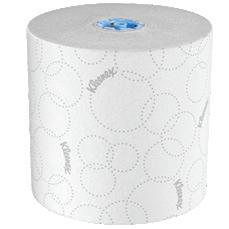


WITH TARGETS IN PLACE TO HALVE FOOD WASTE BY 2030, PACKAGING COULD PLAY A VITAL ROLE.
In Australia, around 7.6 million tonnes of food is thrown out each year. That’s the equivalent of more than 300 kilos of food per person going directly into the bin – all at a cost of $36.6 billion to the national economy.
In a bid to dramatically improve the situation, and in alignment with the UN’s Sustainable Development Goals, the Australian Government has committed to cutting food waste in half by 2030. With that date now less than seven years away, it’s up to all of us to contribute to the cause. And fast.
There’s a number of obvious ways to work at countering food waste – as individuals or as a business. As a hospitality company, for example,
you might reduce your menu or find ways in which you can preserve ingredients for longer; in healthcare, you might attempt to send more unwanted food to compost. But one area that could make a surprising difference is packaging.

The importance of packaging in the fight against food waste can’t be overstated. In fact, a significant amount of food is wasted – whether spoiled or spilt – before it even makes it to the consumer. In certain cases this is due to poorlydesigned packaging, in others because there is a lack of packaging altogether.
But, more surprisingly, packaging can also have >
a large effect on whether food is actually eaten or thrown away. Types and styles of packaging have been shown to influence perceptions on everything from food quality to how healthy a product might be. All of which can make a difference to whether food will be wasted or not.

One recent UK study by sustainability charity Wrap showed that fruit and vegetables wrapped in plastic has the potential to encourage waste. This is because customers will often buy more of them – expecting them to last longer – only to throw out extras they don’t want in due course.
To counter this, Bunzl’s Head of Sustainability Felicity Kelly suggests brands focus on using primary packaging that may alter a consumer’s intentions and habits. For example, using primary packaging made from sustainable materials like recycled PET, sugarcane and paperboard may compel and encourage customers to act in a more sustainable way.

It’s also been shown that clearer communication on packaging prevents consumers from losing track of a product’s shelf-life. This can include information about storage, disposal, longevity and best before and expiry dates. The Australian Packaging Covenant Organisation’s (APCO) Australasian Recycling Label (ARL) is a global
“More surprisingly, packaging can also have a large effect on whether food is actually eaten or thrown away.”
leader in on-pack labelling schemes, with many large Australian and New Zealand brands adopting the program. The ARL helps educate consumers about correct packaging disposal (see page 5) and has proven to effectively reduce consumer waste.
For brands, going back to basics and investing in education around what sustainability means is important. According to Bunzl’s Key Account Manager – Catering, Rachel Fairweather, misleading information can cause major public confusion, especially with customers.
“Keep open communication, find accurate information and present it in an easy way to benefit both customers and staff. It’s all about having those conversations on how you can better assist consumers in reaching their specific sustainability goals – and keeping them up to date and informed on ongoing innovation in that space,” she says.
So as we head closer to 2030, and towards that target to halve the amount of food we throw out, using sustainable packaging may just prove a crucial move.

It’s an equation we’ve become used to each winter. When the cooler weather arrives we spend more time indoors; the more time we spend indoors, the more germs are spread; and in turn the more susceptible we are to those germs.
If you’re running a healthcare or aged-care facility, the implications of that are obvious – and potentially deadly. Guarding against outbreaks is serious, hard work. But the same considerations should be met wherever people are likely to pass on or pick up infections, whether it’s a cafe, restaurant or food-processing centre, or a largescale venue such as a school or shopping centre.
For all of these, maintaining hygiene needs to be a key factor when making preparations for winter. That means ensuring you’re following best practice when it comes to cleaning to keep your employees, customers and residents or patients safe.

According to medical data collected over winter in the Northern Hemisphere, it’s believed Australia and New Zealand’s winter could present increased transmission of viruses such as the flu, Respitory Syncytial Virus (RSV) and the various COVID strains. To protect against outbreaks,
AS WINTER APPROACHES AND GERMS ARE ABUNDANT, IT’S TIME TO ASK HOW EFFECTIVE YOUR CLEANING PRACTICES ARE.
facility managers have the responsibility to ensure cleaners follow industry best practice, know which chemicals and equipment to use efficiently and effectively, and are aware of what areas may require increased attention.


This is highlighted in large-scale facilities where time and labour are key factors. In this case, high touchpoint areas – such as entrances, lobbies and bathrooms should be of focus with requent attention given to these spaces.
Thomas Walkerden, Account Manager – Facilities Management & Government, Bunzl Australia & New Zealand, says there are several areas of improvement that have been identified across the facilities management sector. “Some key areas of focus are cleaning before disinfecting and sanitising, designating cleaning cloths to particular areas according to industry standards and implementing industry-specific training or certification.” With the right training and knowledge, cleaners can efficiently and effectively keep even large venues clean and safe.
Crucial to delivering a thorough clean, you need to ensure the appropriate chemicals are being used for the right areas – and in the right way. Consider, a premium quality microfiber cloth for superior cleaning performance should remove 99.99% of bacteria for a hygienic clean. According to Walkerden, the following products are particularly important to cut through the winter germs:
Chlorine Dioxide: this is the basis of a lot of chlorinated heavy duty cleaners which are ideal for food processing areas, commercial kitchens and amenities.
Hydrogen Peroxide and Peracetic Acid: these chemicals shouldn’t be mixed with anything other than water and are often formulated as multi-purpose products that can be used for stain removal, disinfection and deodorising.
Quaternary Ammonium Compounds (Quats): used to neutralise bacteria, this chemical can require extended contact or dwell times to be effective. Often used in disinfectants, sanitisers and degreasers.
With the right mix of cleaning and hygiene best practices and implementation of industry standards, we can all help limit the spread of germs and bacteria in facilities this winter.
1. Clean before disinfecting and sanitising
2. Designate cleaning cloths to particular areas according to industry standards i.e. blue for general cleaning, green for kitchen areas, red for bathroom areas, yellow for infectious areas
3. Implement industryspecific training or certification
4. Ensure cleaning equipment is always clean and in good working order
5. Blot stains instead of rubbing
6. Adhere to the manufacturer’s dwell times for chemicals before wiping surfaces
7. Use microfibre instead of sponges to clean surfaces
8. Use vacuum cleaners, auto-scrubbers or carpet extractors that have HEPA filtration
9. Change cleaning cloths frequently
10. Ensure, where possible, there is proper ventilation as some chemicals can affect people with breathing difficulties
“Maintaining hygiene needs to be a key factor when making preparations for winter. ”View Kwikmaster Professional’s cleaning range.
Ten best-practice cleaning tips with Bunzl’s Thomas Walkerden:


The Spksy family of glassware look like they’ve just been lifted from a popular speakeasy in 1920s Chicago or New York: sharp as a chalk stripe suit, stylish as a jazzman’s solo and tough as they come.
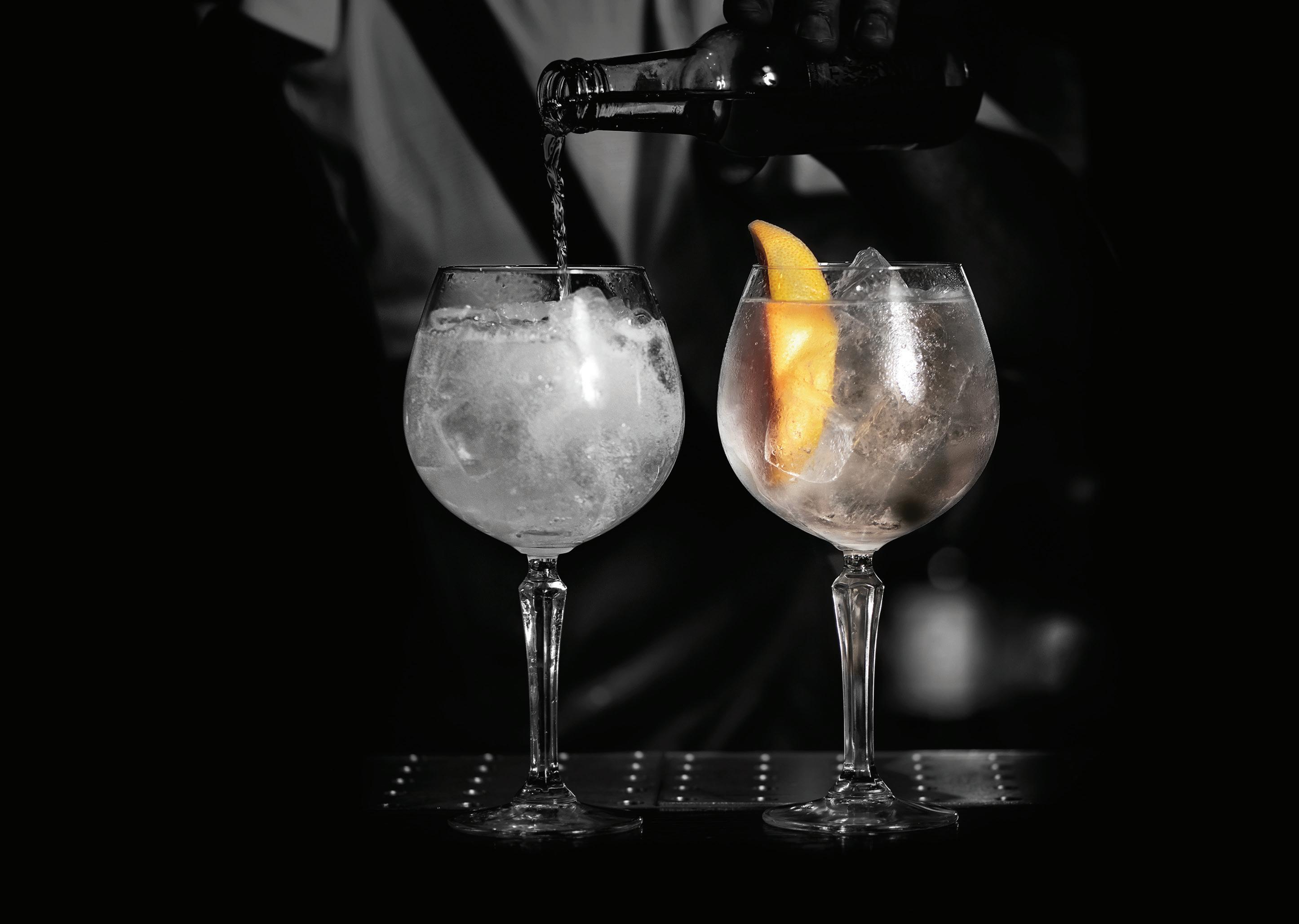
Find the full range at www.bunzl.com.au/trenton
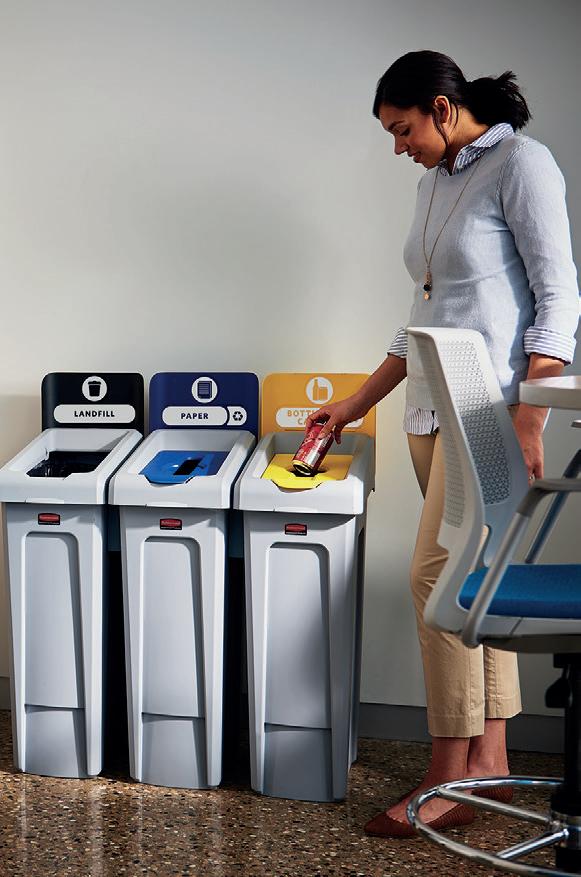


THE DRINKS INDUSTRY IS USING THE NO-ALCOHOL AND LOW-ALCOHOL MOVEMENT TO BE MORE INNOVATIVE AND CREATIVE WITH THEIR OFFERINGS, AND WE’RE CHEERSING TO THAT.

The current customer interest in noalcohol and low-alcohol drinks (NOLO) is transforming the face of beverage service, including retailers, bars and restaurants. It’s forced those in the industry to rethink their menus and product offering, often coming up with creative ways to provide consumers with varied drinks that are just as good as the real deal.
Owner of Continental Deli Bar Bistro in Sydney’s Newtown, Michael Nicolian says that
while there has been growth in demand for non-alcoholic drinks for some time, it has really grown in the past year. “You’re seeing it more and more in what’s available at bottle shops and bars and they are cropping up on menus everywhere,” he says. “Also within food service you’re seeing a massive trend in people consuming them.”
According to market researcher Wine Intelligence, sales of NOLO wine in Australia are expected to grow by 20% annually over the next three years, doubling in volume by 2025.
Nicolian sees it as a consumer-driven movement, which has created demand for high quality non-alcoholic products across the board.
“As trends in food and drink come and go, quality rises to match,” he says. “And that’s definitely what’s happened with the nonalcoholic beers. I think the difference between a beer and non-alcoholic beer now is minimal in terms of taste.”
Continental Deli Bar Bistro also uses nonalcoholic gins to make alcohol-free cocktails, often in the style of a gin and tonic. Nicolian’s favourite non-alcoholic drink, however, is a Shrub (see recipe, right), which uses a fruit syrup and vinegar as a base.
“Shrubs are a great alternative to alcohol, and preserve your favourite fruit flavour for the whole year to enjoy when out of season,” he says.
James Irvine, Creative Director and bartender of Gin Drinks at Four Pillars, says the alcoholfree cocktail space is in a really exciting place. “Brands, consumers, and drink professionals alike are coming together with interesting
approaches to what previously would’ve been an after-thought, captured under ‘mocktail’,” he says. “We’re seeing more innovation, passion and drive, not dissimilar to the amount of effort that goes into a cracking cocktail, becoming the new norm in the alcohol-free space.”
Four Pillars has recently released its first nonalcoholic gin, called Bandwagon, which is already gaining a strong following, through retail outlets and in bars and restaurants.
“This is more than a trend and it’s here to stay,” says Irvine. “I believe that you can deliver the same impactful balance of flavour and structure to an alcohol-free cocktail. Use flavourful ingredients – whether that be fresh produce, mixers or alcohol-free spirit brands. I think the messaging of NOLO is a great initiative. If you’re taking a break for whatever reason, it doesn’t mean you have to sacrifice flavour and fun.
“There are a couple of things to bear in mind when making alcohol-free drinks compared to using booze. However, as a general rule – keep it simple and let the product do the talking.”

“I believe that you can deliver the same impactful balance of flavour and structure to an alcohol-free cocktail.”
IMPRESS GUESTS OR HAVE YOUR OWN HAPPY HOUR WITH THESE FUN MOCKTAILS


James Irvine, bartender and Creative Director of Gin Drinks at Four Pillars
Serves: 6-8•Prep: 5 mins
INGREDIENTS
700ml Bandwagon Dry
700ml mineral spring water or filtered tap water
250ml elderflower cordial
2 lemons, cut into wheels
1 sleeve of mint
METHOD
1. Build ingredients in a carafe over ice and stir together. Serve.
James Irvine, bartender and Creative Director of Gin Drinks at Four Pillars
Serves: 1•Prep: 10 mins
INGREDIENTS
50ml Bloody Bandwagon
20ml fresh lemon juice
15ml simple syrup
Dash of egg white
Soda water
Nutmeg, grated
METHOD
1. Shake all ingredients,
except soda and nutmeg, with ice in a cocktail shaker, and finely strain into a chilled highball glass or tumbler, such as Trenton Libbey X and 350ml Libbey Bliss.
2. Top with soda water. Garnish with nutmeg.
Michael Nicolian, owner of Continental Deli Bar Bistro
Serves: 12-15• Prep: 10 mins (+ 12 days chilling)
INGREDIENTS
500g your favourite seasonal fruit (eg raspberries, strawberries, peaches or plums)
250g sugar
Chardonnay vinegar
Soda water
Fresh fruit, to serve
METHOD
1. To make the syrup, cut the fruit into small pieces and cover in sugar. Seal in a tub, and refrigerate for a few days, giving it an occasional shake to get
the sugar moving around the fruit. After 5 days, strain, reserving syrup and fruit in separate bowls.
2. Add 200ml chardonnay vinegar to every 600ml of reserved syrup. Add fruit back into the mixture and refrigerate for a further week.
3. When ready to serve, fill a glass with as much ice, then pour over one part syrup mixture to five parts soda water. Garnish with some extra fresh fruit.
The pandemic may have made personal protective equipment (PPE) headline news, but for many workers it was already an everyday essential. If you work in healthcare, hospitality or food production, you’ll know that PPE plays a critical role in maintaining health, safety and hygiene, and reducing risk of infection or contamination.

According to Safe Work Australia, it is the responsibility of the person conducting a business or undertaking – the employer – to make sure all employees are supplied with the correct PPE. That includes ensuring that it’s fitted correctly, clean and hygienic, and replaced if not functioning properly. It’s a good idea to conduct regular training for floor staff so they understand how each piece of protective equipment should be worn and used.
Products like gloves, masks, hair nets, shoe covers and beard covers should be at the top of equipment lists for these industries. And certain considerations need to be factored in for each unique PPE. Take face masks as an example; they need to have an effective face seal to both protect the wearer from inhaling germs, and to stop germs escaping from the wearer’s mouth or nose. Badly fitted face masks, or masks that are worn incorrectly, are going to fail at the basics of protection. The same applies for ear and eye protection. >
ENSURE THAT YOUR STAFF HAVE THE RIGHT PERSONAL PROTECTIVE EQUIPMENT FOR THE JOB – AND THEY KNOW HOW TO FIT IT CORRECTLY.




The correct fit is everything, so it’s worth fit-testing these items with staff so they have the confidence to trust the PPE will keep them fully protected.
When it comes to infection and contamination, gloves and handwashing are especially pertinent. In food production and service, the Food Standards Australia New Zealand (FSANZ) Food Standards Code insists workers with cuts or bandages on their hands must wear gloves. Anyone working with ready-to-eat foods should also always wear gloves – with the vinyl variety likely to be the best choice.
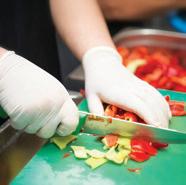
Clear communication and easy-to-follow instructions are key. Talk to your staff about correct PPE usage, implement consistent training and display straightforward visuals, like the PPE infographic below, so there’s no ambiguity around safe and hygienic measures in the workplace.
Your checklist to using and wearing PPE in the right way.

Scan here for Premier’s extensive range of PPE.


Essential in healthcare
Essential in food processing
Does it fit tightly?
Does it fully cover your mouth and nose?
Can you tighten the straps so there is an air seal against your face?
Depending on your working environment, choose:
Vinyl gloves for food preparation
Nitrile gloves for healthcare or cleaning


Are they a snug fit?
Do you have the ability to change them frequently throughout the day?
Does it fully cover your head and stop any loose hair from escaping?
Is the material lightweight and breathable?
Essential in food processing
Does it fully cover your beard and stop any loose hair from escaping?
Is the material lightweight and breathable?

AVOID PERSONAL CARE PRODUCTS THAT COULD DAMAGE YOUR HEALTH, OR THE WIDER WORLD, BY UNDERSTANDING GOOD ENVIRONMENTAL CHOICE AUSTRALIA’S (GECA) ECOLABEL.
The lists of ingredients in personal care products can be as long as they are confusing. Even if you work with these products regularly, it’s easy to come across soap, sanitisers, body washes and shampoos with no clear information on how they were made or what they are made from. This is the reason that certifications like the GECA ecolabel are all the more valuable. Products and services labelled as certified by GECA can be guaranteed to have met the organisation’s strict ethical and environmental standards. Here’s a guide to what the GECA standards mean when it comes to personal care products.
It might seem counterintuitive that a product designed to care for your customers could contain substances harmful to their health. But often, a host of hidden detrimental ingredients can be found in soaps, sanitisers, shampoos and the like.
Studies have shown that some of the preservatives, such as parabens, found in these products can cause reproductive issues and genetic mutations. Equally, certain fragrances can spur allergic reactions and respiratory irritation. With the GECA certification, you can be assured that prevention of the use of harmful substances or irritants has been exercised.

Palm oil has become the most widely used vegetable oil on the planet, and can be found in close to 50% of packaged products – such as detergent, soap and shampoo – in hotels, commercial kitchens and airports, for example. With high use comes high demand, and with high demand has come irresponsible farming, deforestation, habitat loss and threats to local communities. As such, personal care products that show the GECA label must only contain palm oil that’s been sustainably sourced.
Microbeads are tiny pieces of plastic often added to care products, such as body and face washes, to provide exfoliation. In recent years, these singleuse plastics have been shown to be a hazard to the environment, and in particular to marine life. The NSW Environment Protection Authority has deemed them harmful due to their composition and ability to attract toxins. GECA limits the use of microbeads and other substances harmful to aquatic environments, but the industry has taken a further approach to not include them at all.
The increase in the number and scale of algae blooms in bodies of water has become a growing problem in Australia and further afield. This is often caused by the presence of phosphorous, which is carried into rivers and lakes from industrial sources and urban stormwater run-offs, disrupting aquatic ecosystems and their surrounds. GECA-labelled personal care products, therefore, are manufactured without using phosphorous compounds.
In addition, GECA standards encourage the recovery, reuse and recycling of packaging where possible. They also ensure workers throughout the supply chain receive fair pay and work in a safe environment.
The ability to ground your business in sustainable practices is being made easier every day with regulatory bodies such as GECA doing the necessary work to provide clear solutions –read the labels, understand the implications and be part of the common goal.

Katermaster’s

McDonald’s Daniel Antonjuk on learning from the ground up.
For some people, their first job as a teenager is no more than a chance to earn some spending money and gain independence. For others, like Daniel Antonjuk, it was a stepping stone to an accelerated corporate career that shows no signs of slowing.
The moment Antonjuk was old enough to work, he applied for a job at his local McDonald’s. He got it, and now thirteen years on he is still as interested in the business as the day he started. Only now, Antonjuk is working out of Australia’s head office in a strategic-sourcing role looking after the McDonald’s food supply chain for Australia and New Zealand.
“As soon as I started, I was hooked. There are still many of us here that have never worked anywhere else. We use the expression, ‘we’ve got ketchup in the veins’,” Antonjuk says.
“My current role is as a sourcing consultant in the food supply chain, and it’s fascinating because there are always competing priorities, such as cost pressures and demand for equipment and supplies, which is a driving force for me.”
Antonjuk says thst his early days on the grill and French fries station have stood him in good stead for the evolving nature of his tenure at McDonald’s. “I have learnt about prioritising and

“If COVID taught us one thing, it was that we need to be ready for anything, and that means creative thinking needs to be an integral part of the business.”
team work throughout my career – and it means we can deal with any challenges we face.”
As he rapidly graduated to crew trainer and then a managerial role by 18, Antonjuk also started a Bachelor of Business degree at university, juggling business theory with practical application.
“The advantages of a business degree are quite broad – so having the opportunity to both study and learn firsthand about different roles across the business has been beneficial. I really wanted to know how the IT department works, how operations works, how the legal and finance teams work together, and I was given that chance,” he says.
His thirst for learning landed him in a role sourcing global and local equipment suppliers for the Australian and New Zealand market, where he honed his supply-management skills for four years.
“That role included testing and approving new equipment, which taught me how to work through any issues or feedback we might receive. It was also a lesson in how to liaise effectively with other departments and our licensees, which are critical to our business.”
He believes it’s those skills that helped him manage the disruption caused by the pandemic. While localised lockdowns caused factories to shut down, and supply chains were impacted like every other industry, one of the biggest challenges for McDonald’s was being able to manage the sudden demand as countries emerged from lockdown.
“We had a surge in demand from multiple markets to open new restaurants – and we had to justify why we needed equipment and supplies to meet that demand. Our job was to work with both our global teams and the suppliers to make sure that we could get that equipment on time,” he says.
Antonjuk predicts there will be some ongoing pressures for sourcing managers, and being able to meet those challenges will rely on a mixture of process and innovation.
“I think we can expect some continued pressure on costs due to inflation, as well as a need to manage timelines and expectations due to delays in the supply chain,” he says.
“If COVID taught us one thing, it was that we need to be ready for anything, and that means creative thinking needs to be an integral part of the business.”
QUICK-FIRE Q&AMichael tells us about his role as National Business Development Manager, and creating better efficiencies for customers.
Tell us about your path into the hospitality sector. I’m a newcomer to Bunzl having begun in July last year. I previously worked in management in the food distribution and accommodation sectors for over 10 years. I’ve been in the hospitality industry from the age of 16, starting at my stepfather’s Melbourned-based catering company – so this has been a large part of my life for many years now. When it comes to your role, what do you appreciate the most?
MICHAEL LOCKE National Business Development ManagerI get to work with some of Australia’s (and the world’s) biggest hospitality businesses. I’m learning about their operation models and practices while meeting people within these large-scale businesses, ultimately helping them achieve their goals through what Bunzl has to offer and provide.
What are some important considerations that help you to do your role well?
Being able to effectively communicate with my customers to ensure that I’m not only providing them with solutions, but also helping to reduce pain points across their entire business. Many of my customers consider me as a trusted advisor, and with that, as well as my experience and role, I want to help them create better efficiencies.

Have you been inspired by any sustainability initiatives within the hospitality space?
The removal of all single personal care amenities across hotels and accommodations has been exciting to see from a sustainability point of view. Being part of Bunzl and helping our customers navigate these changes has been a large focus recently. It’s meant assisting hotel chains with the sourcing and roll-out of better alternatives across – sometimes hundreds – of sites, which has been both challenging and rewarding. By working on large-scale projects like this, we know that we’re heading towards a more sustainable future. Are there any tech innovations in your industry that you’re particularly excited about?
What I’m seeing a lot of is the emergence of AI within hotels and hospitality establishments. From housekeeping to cleaning and robot waiters for services, there are some really exciting changes across the hospitality industry when it comes to developing technologies. What’s particularly exciting to witness is all the possible efficiencies and labour-saving costs that innovative and smart technologies can create for a business.
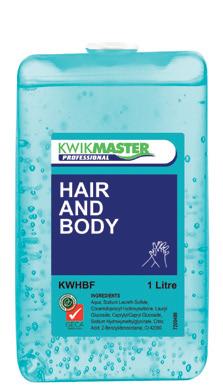

Kwikmaster Professional’s range of GECA certified personal care products ensure your health and hygiene practices support environmentally preferable production and consumption. The GECA range comes in 100% recyclable packaging and offers a cost effective and quality hygiene solution. Each personal care product can be used with the Kwikmaster Professional manual dispenser.





